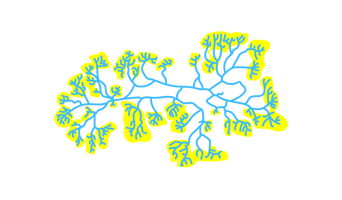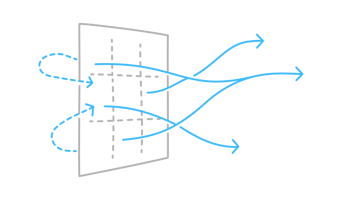Companies that want to strengthen their self-organizing capabilities have to move from managerial delegation to granting the authority to self-manage in a well-designed, decentralized approach. This can be achieved by moving incrementally away from traditional vertical decentralization towards horizontal decentralization in the organization’s design.
Vertical and horizontal decentralization: how they differ and why that matters
Many company initiatives intended to promote the future of work don’t go anywhere because they are too superficial.
For example, advocating for increased self-organization and entrepreneurial decision-making without changing the basis of how the organization actually works won’t get far. Job titles are changed, fancy jargon is introduced, and visions are presented, but there is no fundamental shift away from managerial hierarchy. The desire to move into a future of work that is different from the status quo is often not attained, or the change can be very slow.
One way to describe the gap between the ambition for change and the pace of change is the following: companies remain stuck in vertical decentralization and do not manage to move towards horizontal decentralization in a permanent, self-regulating way.
-
Vertical decentralization delegates decision-making rights to lower levels of the organization. Often this delegation - or deconcentration - comes with carefully embedding this authority into guidelines, policies, backstops, checks, and controls. Such vertical decentralization is limited in several ways. First, it is confined to the scope of the decision maker at the top of the vertical organization (sometimes called the silo). Second, decision-making authority that has been granted is often later revoked by a higher authority; sometimes managers can overrule decisions as they see fit.
-
Horizontal decentralization distributes decision-making authority evenly across an organization. If done in a formal way, horizontal decentralization does not allow higher-ups to institute or retain “power over” decision rights that could permit them to overrule decisions made by peers.* In horizontal decentralization, there are no managers who delegate some decisions to subordinates - there are only equal players who have processes in place to divide up work and align overarching decisions among themselves.
Boost organizational effectiveness
with Management Kits
A simple example of horizontal decentralization would be a self-organizing team in which team members collectively decide to divide up tasks among themselves without a central boss who assumes final responsibility over task distribution and execution.
The team as a whole might still retain a central mechanism of shared leadership, if not a central boss role, to oversee execution and make decisions when conflicts arise.
A move towards self-management is made up of a sequence of steps towards vertical decentralization, followed by horizontal decentralization
A shift to actual self-management that breaks the pattern of traditional organizational hierarchy requires both a specific form of vertical decentralization (step 1) and an institutionalized mechanism for horizontal decentralization (step 2).
Logically, the two steps can be seen as a sequence, yet timewise both steps will have to be prepared for and triggered at once.
-
In a first step, power holders in management must vertically decentralize decision-making authority, not merely over work execution and not only in a temporary way, but they must decentralize with clearly defined mandates in a permanent way.
-
In a second step, this managerial power has to be transformed into an ongoing governance process of horizontal decentralization. This governance process must be a formal process in order for self-management to be sustainable. In order to work, it must be thoroughly thought-out, well-designed, and tested. The capacity and the capabilities required for self-managing employees to work together effectively must also be in place.
In short, leaders have to (vertically) decentralize power in combination with instituting processes aligning horizontal actors who no longer deal with each other via hierarchical reporting relationships.
Preview the Organize for Self-Management Kit
Reference
*In his classic study on organization design configurations, Henry Mintzberg defined horizontal decentralization mainly as an informal mechanism at the bottom of the organization: “Horizontal decentralization refers to the extent to which power flows informally outside … [the vertical] chain of line authority (that is, to analysts, support staffers, and operators in the operating core).”
Henry Mintzberg: Structure in 5's: A Synthesis of the Research on Organization Design, Management Science, Vol. 26, No. 3 (Mar., 1980), pp. 322-341.



